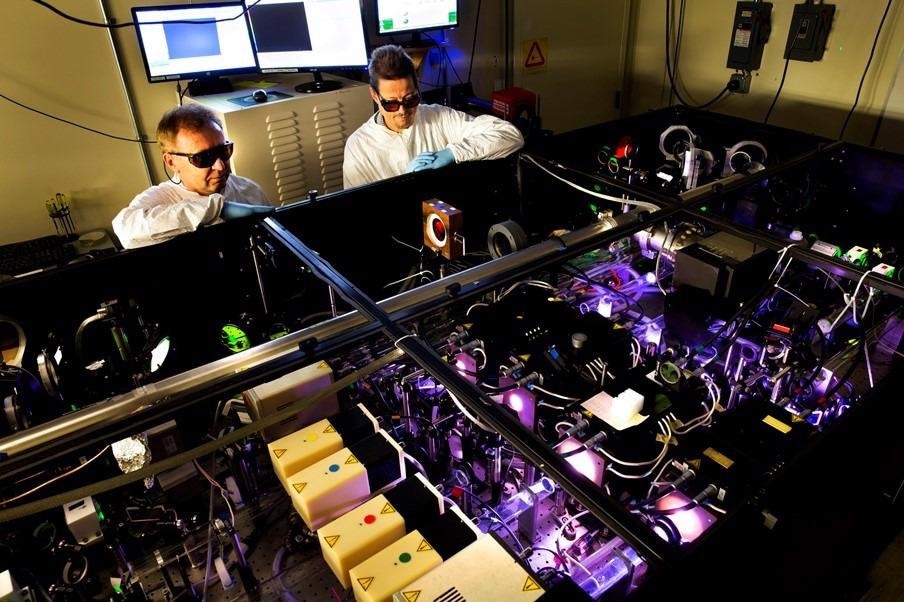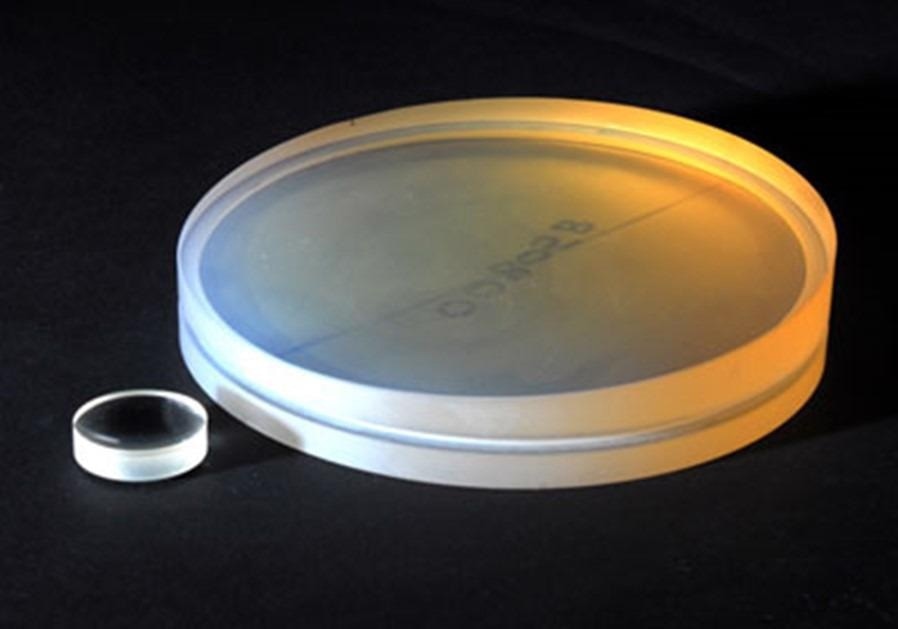
CUOS researchers performing multidisciplinary research on the applications of ultrashort laser pulsers. Image Credit: University of Michigan
Optical Surfaces Ltd has been selected by the Gérard Mourou Center for Ultrafast Optical Science (CUOS) at the University of Michigan (USA) to provide beam expander optics for its ground-breaking Zettawatt-Equivalent Ultrashort pulse laser System (ZEUS). Sponsored by the U.S. National Science Foundation, the ZEUS laser facility is being constructed to allow a Petawatt laser pulse from one of its beamlines to collide with a beam of GeV-energy electrons generated by its other beamline. In this collision, the electrons will encounter a Zettawatt (1021 watt) equivalent laser power as measured in their rest frame.
John Nees, a research scientist at CUOS said “The construction of the ZEUS facility began in 2020 and is slated to be operational in 2024. Among its numerous challenges, the Chirped-Pulse Amplified (CPA**) laser system requires an ‘aberration-free’ telescope to deliver the fully amplified pulses at a safe fluence to the 3 Petawatt compressor where their power is increased 50,000-fold for experimental use. The telescope comprises a 170 mm diameter convex aspheric mirror and a 255 mm positive spherical mirror used in an off-axis design. As a leading manufacturer of ultra-high precision Petawatt laser optics we selected Optical Surfaces Ltd. to fabricate the precision mirror substrates that will be coated and used to expand the pulsed beam diameter from 140 mm to 305 mm”. He added “I really did appreciate Optical Surfaces energetic responses to my inquiries as I was planning the telescope. Their knowledgeable input gave me a good comfort level in moving the project forward”.
Director of Sales at Optical Surfaces Ltd. – Dr Aris Kouris commented “We are honoured to be selected by CUOS as the supplier of high precision beam expander for this prestigious project. With this ZEUS laser system, the CUOS team is excited about the possibility of probing quantum electrodynamics, the reigning explanation of how the universe operates at the subatomic level. In addition, ZEUS could help develop new methods and technologies for use in medicine, defence, material science and astrophysics”.
Globally, only a few optical manufacturers can produce off-axis optics as part of the delivery system of sufficient surface quality to enable ultra-high-power lasers to focus their massive energy onto targets only a few microns in size. Under these extreme conditions the laser-matter interactions can produce energetic beams of electrons and protons as well as bright, coherent sources of x-rays which enable researchers to address fundamental questions in areas including plasma physics, x-ray radiography, proton therapy and fast ignition experiments. Using in-house production techniques developed over the last 50 years and benefiting from a highly stable manufacturing environment largely immune from vibration and thermal variation, the company's experienced and skilled engineering team can produce fast-focusing off-axis mirrors with unmatched surface accuracy, surface quality and surface slope errors.
The company's ISO 9001-2015 approved manufacturing workshops and test facilities are deep underground in a series of tunnels excavated in solid chalk. This provides an environment where temperature is naturally thermally stable, and vibration is extremely low. With such stable conditions testing of high precision mirrors, particularly with long path lengths, becomes quantifiable and reliable. In addition to these natural advantages, Optical Surfaces has invested in an extensive range of test equipment and have developed methods to ensure accurate and reliable testing.

Off-axis beam expander optics. Image Credit: Optical Surfaces Ltd
For further information on the pioneering work of the Gérard Mourou Center for Ultrafast Optical Science (CUOS) at the University of Michigan visit: https://zeus.engin.umich.edu/.
** The invention of the Chirped Pulse Amplification (CPA) laser system was the basis for awarding the 2018 Nobel Prize in Physics to Gérard Mourou and Donna Strickland. See https://www.nobelprize.org/prizes/physics/2018/summary/